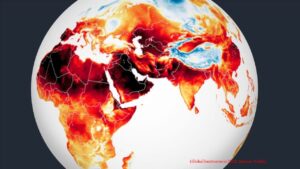
Date:
Tuesday, 5 November 2024; 8th Anniversary
Coordinator:
United Nations Office for Disaster Risk Reduction (UNISDR)
Objectives:
World Tsunami Awareness Day is annually observed for the following purposes:
- to foster a better understanding and knowledge of tsunamis around the world,
- to highlight the importance of disaster education and early warning systems,
- to promote the development and implementation of appropriate preparedness and effective response to disaster risks.
Inception:
The first World Cities Day was officially held on November 5, 2016.
History:
On 22 December 2015, the UN General Assembly designated 5 November as World Tsunami Awareness Day, by its resolution A/RES/70/203, calling on countries and international bodies to raise tsunami awareness and share innovative actions.
The date of 5 November was chosen to commemorate the Japanese story of “Inamura-no-hi” (meaning “burning of the rice sheaves”). During an earthquake in 1858, a Japanese farmer saw the tide receding and knew a tsunami was about to hit. He set a fire to warn other villagers so they could flee to high ground. Afterward, the farmer built an embankment and planted trees to protect the village from future tsunamis.
Why do we mark World Tsunami Awareness Day?
A tsunami is a series of enormous waves usually caused by earthquakes or volcanic eruptions occurring below or near the ocean. It is one of the deadliest natural disasters. For example, the Indian Ocean tsunami that occurred in December 2004 caused 227,000 fatalities in 14 countries. In the last 100 years, 58 major tsunamis have taken place over the world, causing more than 260,000 lives. On average, each tsunami caused 4,600 lives, surpassing any other natural hazard.
Over the past two decades, tsunamis have accounted for almost 10 percent of global economic losses from disasters. Currently, over 700 million people live in low-lying coastal areas and small islands. According to the United States, it is estimated that around 50 percent of the world’s population will live in coastal areas by the year 2030. They may be exposed to extreme sea-level events including flooding and tsunamis.
How to observe the Day:
Learn, share, action.
Since 2016, many countries and communities have annually a range of events, including seminars, lectures, conferences, educational programs, and social media campaigns, to spread awareness for tsunamis. Each year a specific theme is selected, by the United Nations, to promote tsunami awareness and share innovative actions.
Annual theme in recent years:
2023 theme: “Fighting Inequality for A Resilient Future”.
2022 theme: “Early Warning and Early Action Before Every Tsunami.”
2021 theme: “Leveraging the Power of Science and Technology to Reduce Tsunami Risk for Current and Future Generations.”
Official website:
www.un.org/en/observances/tsunami-awareness-day


Leave a Reply